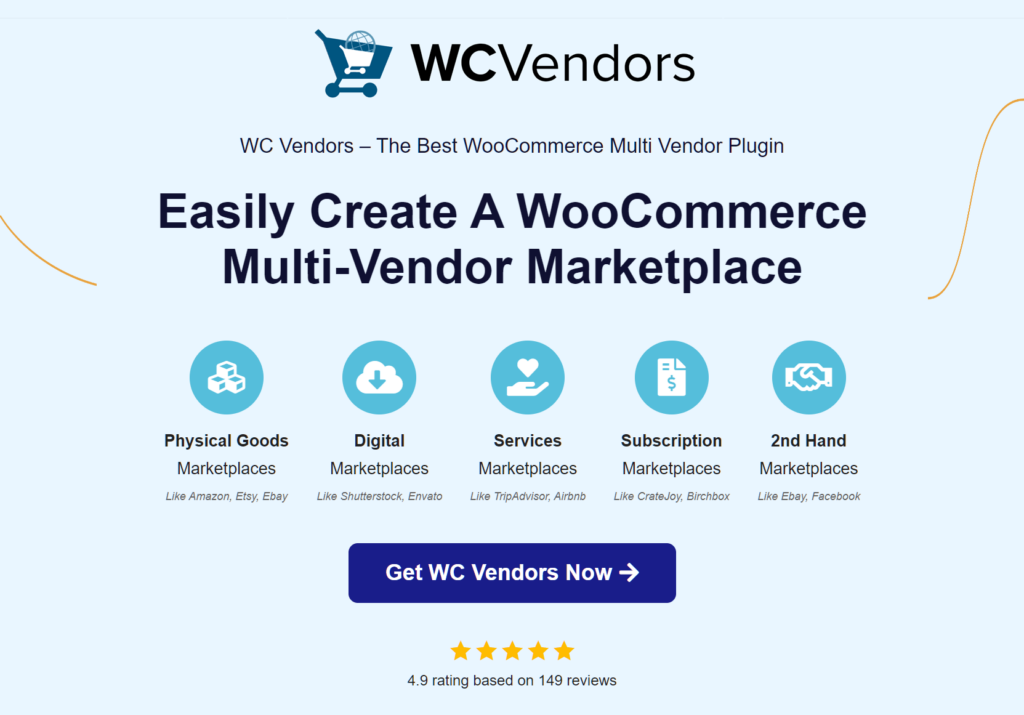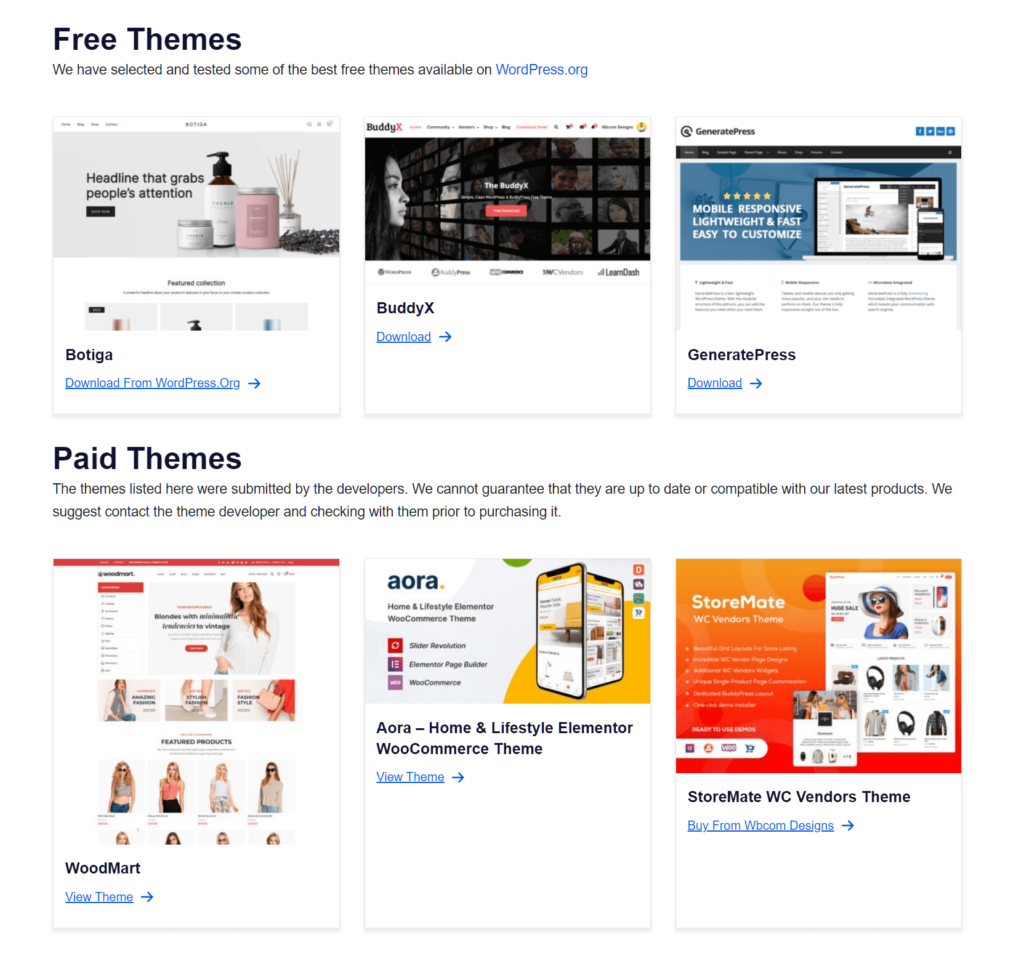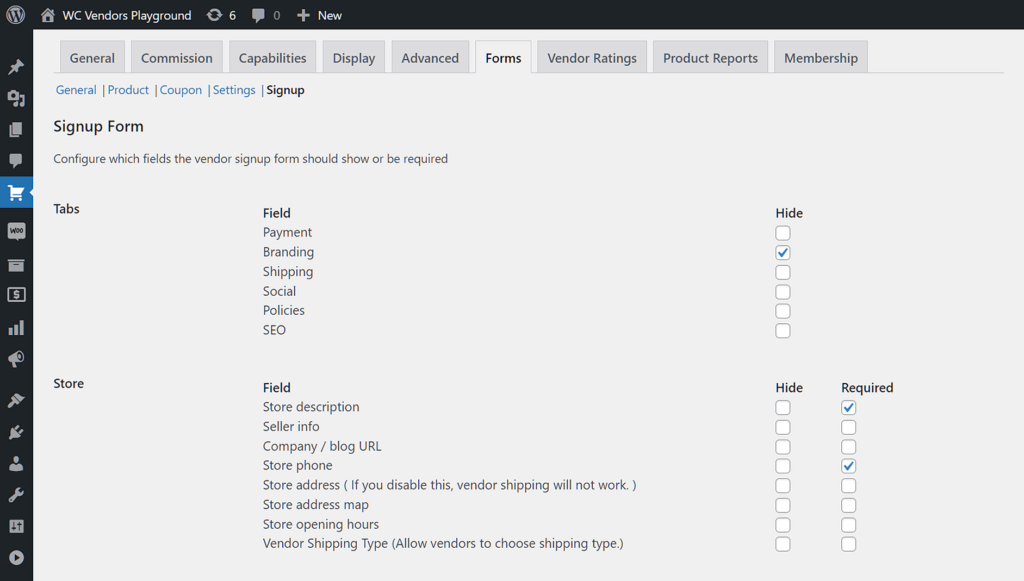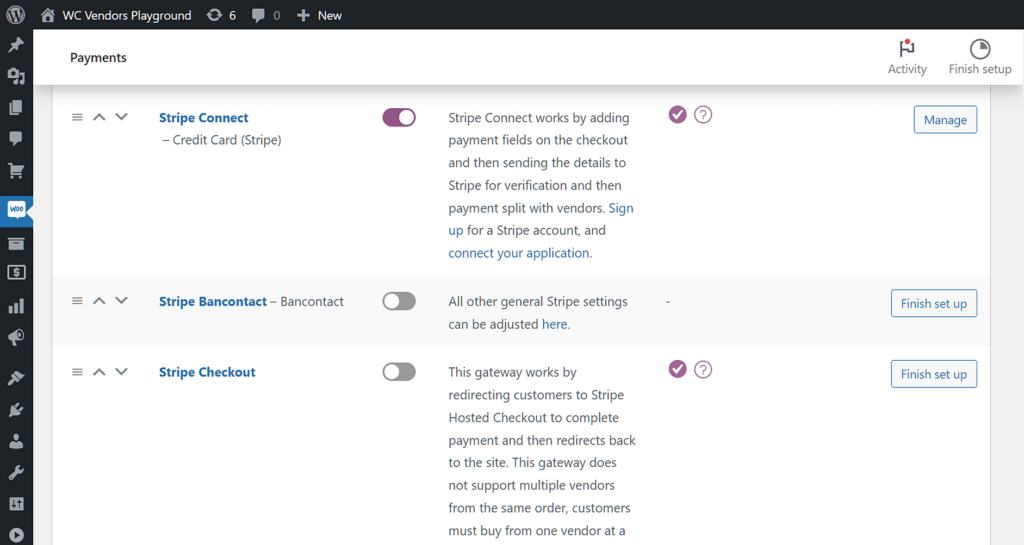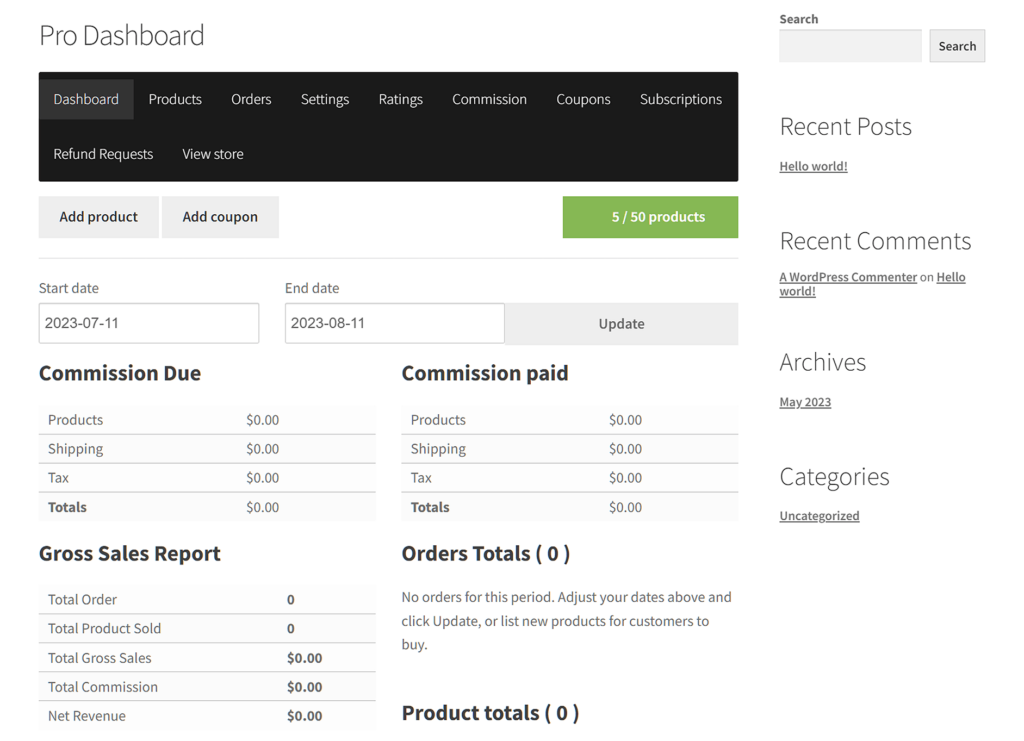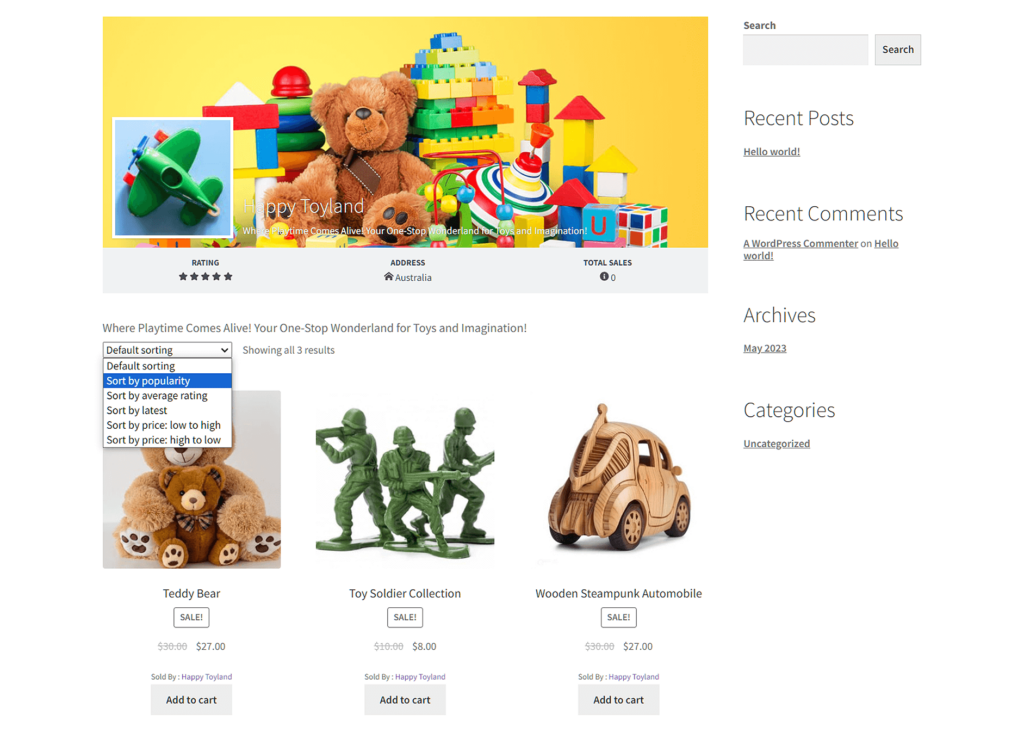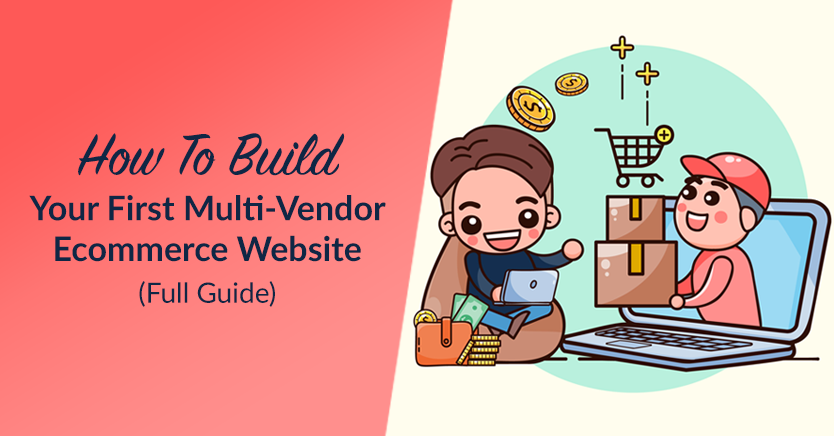
Are you intrigued by the idea of launching your very own online multi-vendor marketplace? We don’t blame you. After all, platforms like Amazon, eBay, Etsy, and Alibaba generate unimaginable amounts of profit on a daily basis. So who wouldn’t want in on the billion-dollar action?
The fact is, the concept of a multi-vendor marketplace – where multiple sellers offer their products or services in one centralized platform – has gained immense popularity in recent years. From giants like the aforementioned Amazon to specialized niche platforms, the potential for growth and profitability of such an e-commerce venture can’t be denied.
Today, we’ll give you a step-by-step overview of the process of creating a multi-vendor marketplace. We’ll walk you through crucial stages, such as the laying of the initial groundwork, the final technical implementation, and everything in between. This way, you’ll know what you need to do to start your digital shopping hub.
So let’s jump right into it!

Preparation And Planning: Setting The Stage For Success
Before diving into the intricacies of platform choices and technical integrations, it’s crucial to lay a solid foundation for your multi-vendor marketplace. Therefore, the first phase of your endeavor should involve meticulous preparation, thorough research, and strategic planning.
1. Market research and niche selection
Start by identifying your target audience. Who are most likely to buy from your marketplace, and what are their needs, preferences, shopping habits, and pain points? Gathering insights about your potential customers will help you tailor your marketplace to meet their specific demands.
You’ll need to conduct extensive market research to uncover gaps in the market. Thus, analyze existing marketplaces and identify any overlooked segments. Then, look for opportunities where your multi-vendor marketplace can offer unique value.
It’s also a good idea to choose a niche that aligns with your interests. However, keep in mind that while your knowledge of a particular niche can drive your marketplace’s success, you must ensure that said niche also has the potential for growth and sustainable demand. In short, balancing your interests with market potential is key.
2. Vendor analysis
For your marketplace to thrive, you need to recruit vendors who are an ideal fit for it.
Thus, research and compile a list of potential vendors. Focus on those who share your goals. In addition, identify their products or services and prioritize sellers whose offerings align with your chosen niche and target audience.
We recommend categorizing potential vendors based on the types of products or services they provide. This will help you maintain a diverse and attractive product catalog for your marketplace.
On top of that, you must assess their reputation in the market. This means examining reviews, ratings, and feedback on their current selling platforms. Remember, reputable vendors contribute to a positive shopping experience for your users.
Lastly, you must understand your potential vendors’ business practices. Therefore, reach out to and talk with them about their policies regarding shipping, returns, customer service, and quality control. This information will be crucial for maintaining a high standard within your marketplace.
3. Formulation of business model and strategy
You must define a clear business model and strategy to give your multi-vendor marketplace direction.
For this reason, decide how your marketplace will generate revenue. Will you charge vendors a subscription fee, a percentage-based commission on sales, or a combination of both? Every model has its pros and cons, so choose one that aligns with your marketplace goals.
Furthermore, you should create a strategic roadmap. This means developing a comprehensive plan that outlines how you’ll attract both vendors and buyers to your platform. Therefore, detail your marketing strategies, which can include content creation, social media campaigns, advertising efforts, influencer partnerships, and more.
We suggest clearly communicating the benefits of joining your multi-vendor marketplace to both vendors and buyers. By emphasizing what sets your platform apart from competitors, you increase your chances of drawing the right people to your business.

Technical Implementation: Building Your Multi-Vendor Marketplace
With a clear strategy in place, you’re ready to delve into the technical aspects of creating your multi-vendor marketplace.
The following steps involve selecting the right platform, integrating payment gateways, managing vendors, and ensuring a seamless user experience.
1. Platform selection
Choosing the right platform can contribute to the success of your multi-vendor marketplace.
Opt for a versatile, customizable, and user-friendly e-commerce platform. For example, the highly popular plugin WooCommerce can turn any ordinary WordPress site into an online retail store. Then, you can use the powerful marketplace extension WC Vendors to transform this store into a multi-vendor marketplace.
WC Vendors allows you to build the essential infrastructure for your marketplace’s functionality. And because this platform doesn’t require complex coding or knowledge of other intricate systems, you can have a digital shopping center up and running in no time.
2. Website development and design
To attract both vendors and buyers, your website must be both visually appealing and convenient to navigate.
Craft an intuitive interface that guides users towards their destination instead of creating confusion. Moreover, getting from one destination to another should involve as few clicks as possible. Also, make sure your website prominently showcases products, services, and vendors. And don’t forget to use calls to action to entice customers to make purchases!
At the end of the day, the design of your multi-vendor marketplace should cater to vendors looking to list their offerings as well as buyers seeking a pleasurable shopping experience. Thankfully, marketplace extensions such as WC Vendors support thousands of free and paid WooCommerce themes, allowing you to shape a shopping haven that’s as pretty to look at as it is fun to explore!
3. User registration and vendor onboarding
Streamline the onboarding process for users and vendors alike. This involves creating a hassle-free registration procedure that efficiently collects necessary information only.
Thanks to the various options WC Vendors offers, you have complete control over the vendor registration process. For example, you can manually or automatically approve vendor applications; decide what information aspiring vendors must submit; require images for branding purposes; and more.
In addition, it’s a good idea to implement a robust vendor verification process to ensure the legitimacy of your potential sellers’ businesses. This not only bolsters the trustworthiness of your platform but also safeguards the interests of all participants.
4. Product listing and management
It’s to your best benefit to empower vendors with a straightforward way to list their products or services.
Thus, develop a user-friendly product management system equipped with essential features like category organization, tags for easy discovery, and flexible pricing options. This simplifies the process for vendors. Not only that, it also enriches the browsing experience for buyers, making it a win-win situation!
Again, this is where tools such as WC Vendors can help. WC Vendors boasts numerous options that let you control how much product information vendors can showcase. For instance, a product listing can have tags, an image gallery, SEO, and information about its price, stock quantity, shipping fees, variations, and so much more. Additionally, you can cross-sell and/or upsell or even modify the product form’s appearance!
5. Payment gateway integration
Facilitate secure and seamless transactions by integrating trusted payment gateways.
To protect the sensitive information provided by vendors and customers alike, compliance with industry standards is a must. In addition, offer various payment options to cater to your user base’s diverse preferences.
Online marketplace solutions can prove useful here. For example, WC Vendors boasts integration with popular payment gateways including Stripe Connect, thus allowing you to process credit card payments and award commissions to your vendor commissions automatically.
Lastly, ensure your checkout process is as convenient as possible, as this can enhance buyer satisfaction and encourage repeat business.
6. Vendor management tools
Give your vendors the ability to efficiently manage their operations within your marketplace.
Therefore, develop a dedicated vendor dashboard that grants sellers control over their inventory, order processing, and customer interactions. Said dashboard should also provide performance analytics and insights to let your vendors optimize their strategies and offerings.
Once again, this is where WC Vendors and similar tools can be of great help. WC Vendors Pro comes with a Pro Dashboard that provides you and your sellers significant control over how the stores in your multi-vendor marketplace appear and function.
7. User experience optimization
Last but not least, focus on creating a convenient and pleasurable shopping experience for your customers.
Incorporate thoughtful features, such as advanced search functionality that can help users quickly locate desired products. Integrate user reviews and ratings to enhance credibility and guide purchasing decisions. Furthermore, we recommend offering personalized recommendations based on user preferences.
Of course, you should also prioritize responsive customer support. After all, when you address inquiries promptly, you keep your customers happy, encouraging them to stay loyal to you.
Launch And Growth: Taking Your Multi-Vendor Marketplace To The Next Level
With your multi-vendor marketplace up and running, your journey has only just begun. The launch phase is pivotal, and ongoing efforts are essential to sustain and grow your platform.
1. Marketing and promotion
Your marketplace’s success hinges on attracting vendors and buyers. For this reason, you must craft a comprehensive marketing strategy that leverages various channels.
Fortunately, you have many tried-and-tested marketing strategies at your disposal. For instance, you can engage your audience and spread the word via social media. You can invest in content marketing to educate and inform. We also recommend collaborating with influencers to extend your reach.
Of course, it’s also a great idea to employ targeted advertising to generate excitement around your platform.
2. Quality control and feedback loop
Because maintaining high-quality standards is essential, you must regularly monitor the activities of your vendors to ensure their adherence to guidelines.
Implement a feedback loop that encourages open communication. Additionally, address concerns promptly and use feedback to refine your processes. This commitment to quality will instill trust in both vendors and buyers.
3. Customer engagement and retention
Prioritize the satisfaction of your buyers.
One way to do this is to deliver exceptional customer support to address queries and concerns.
Another is to implement engagement strategies that keep customers connected to your platform. We recommend using loyalty programs, special discounts, and exclusive deals to incentivize repeat business. Remember: Happy customers not only return but also spread positive word-of-mouth.
4. Continuous innovation
Because online marketplaces are always evolving, you must embrace innovation to get ahead in the game.
Thus, stay updated on industry trends and user preferences. Whenever possible, introduce new features that enhance user experience. Also, explore opportunities to expand into related niches that align with your platform’s vision.
By remaining adaptive and forward-thinking, you’ll ensure the sustained growth of your multi-vendor marketplace.

A Comprehensive Guide On How To Build Your First Multi-Vendor E-Commerce Website
In this article, we discussed the strategies you need to employ if you want to create a multi-vendor marketplace. However, to actually build the website that will serve as said marketplace, you’re going to need an entirely different guide.
Therefore, if your dream is to become a marketplace operator, your next step is to read our article, “How To Build Your First Multi-Vendor E-Commerce Website (Full Guide).” This is a highly recommended, in-depth tutorial on how to use WC Vendors to transform an ordinary online store into a fully functional multi-vendor marketplace.
Conclusion
Creating a multi-vendor marketplace demands a blend of strategic planning, technical expertise, and ongoing dedication. By following our step-by-step overview, you prepare yourself to embark on your journey to establish a thriving online platform where vendors can connect with eager buyers.
To summarize, before you can create a multi-vendor marketplace, you must first come up with a solid plan for the building of its foundation. This involves engaging in:
Once you know what you want out of your multi-vendor marketplace, it’s time to consider and implement its technical aspects. This means concerning yourself with:
- Platform selection
- Website development and design
- User registration and vendor onboarding
- Product listing and management
- Payment gateway integration
- Vendor management tools
- User experience optimization
Finally, to launch your platform and ensure its growth, you should prioritize:
- Marketing and promotion
- Quality control and feedback loop
- Customer engagement and retention
- Continuous innovation
Remember, success in the multi-vendor marketplace arena hinges on your ability to provide value to both vendors and customers. So follow the steps in this guide to create a win-win ecosystem that fosters growth and prosperity!
Do you have any questions about how to create a multi-vendor marketplace? Let us know in the comments below!
